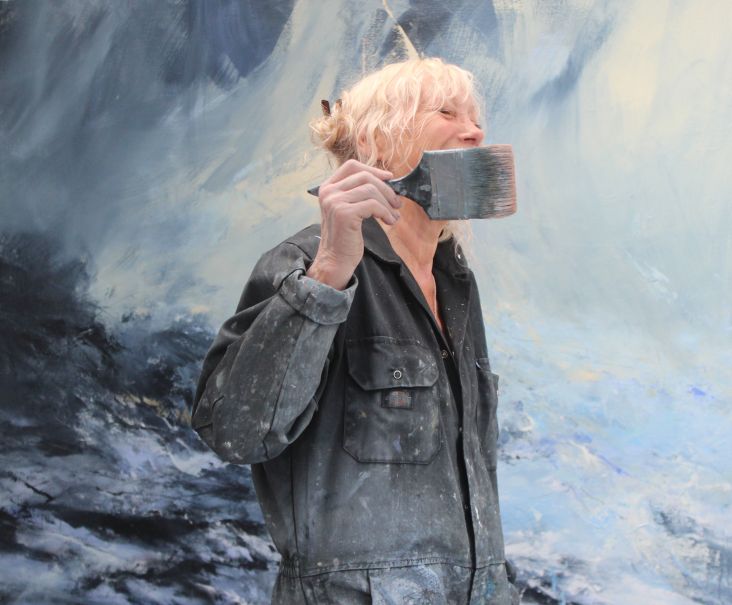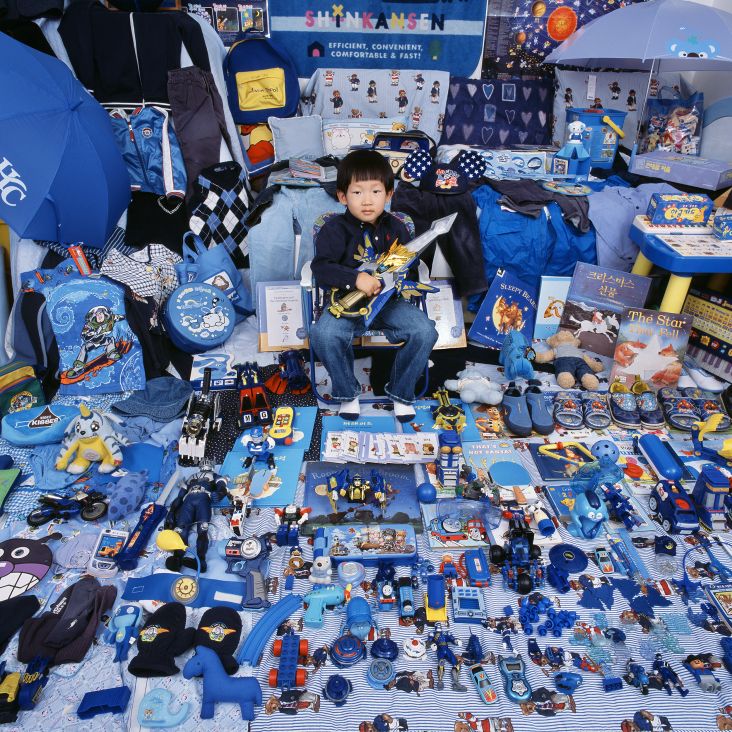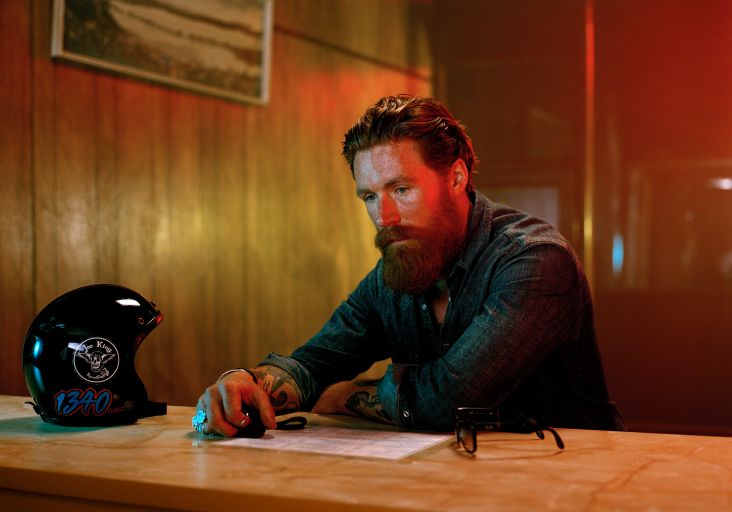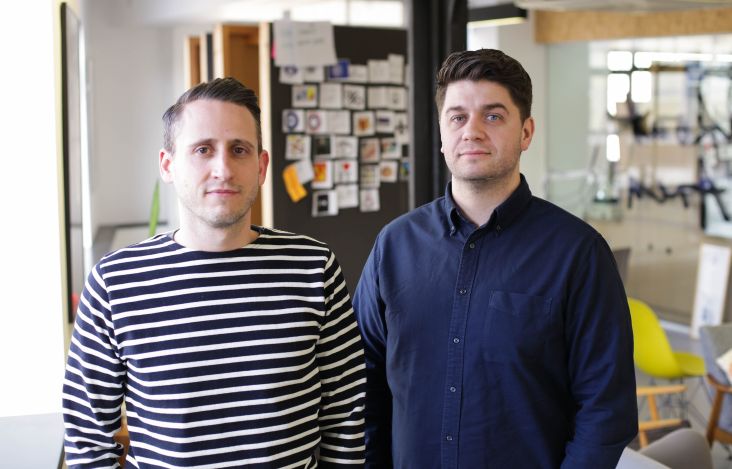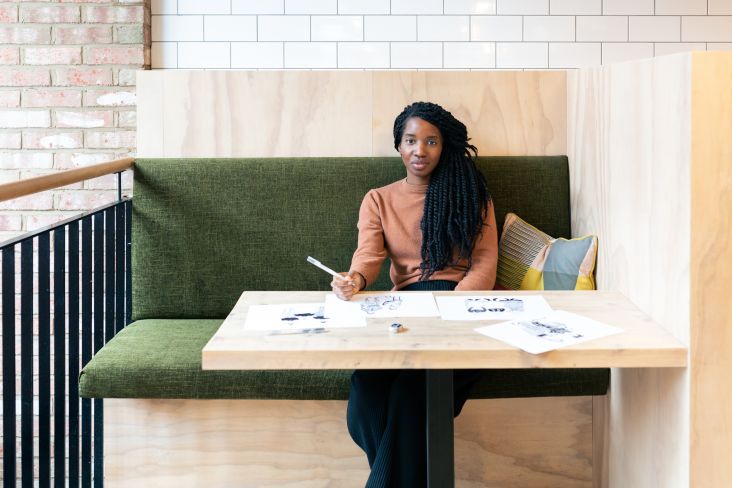Morag Myerscough on career highlights so far, going her own way and why it's important to always reassess
The award-winning and prolific designer/artist Morag Myerscough’s mantra is "make happy those who are near and those who are far will come". Born and bred in London, she has always lived in the city and is fascinated by how colour, pattern and words can change urban environments.
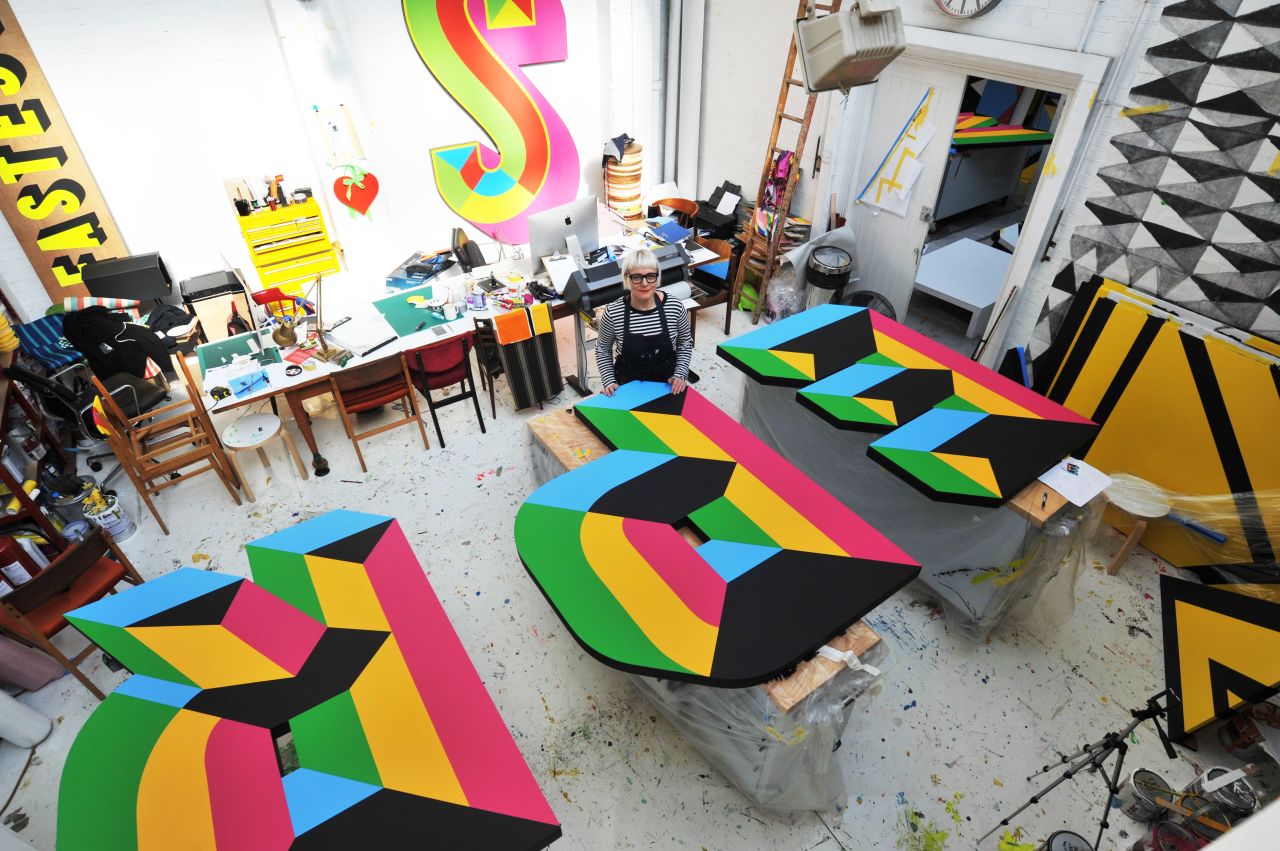
Morag Myerscough
From schools and hospitals to cultural hubs and town centres, Morag transforms public spaces by creating engaging experiences for everyone. The Temple of Agape, built for the Festival of Love on London’s Southbank in 2014, created an open, interactive symbol of devotion to love in all its forms.
Her strong visual approach is instantly recognisable and elevates every context in which it is placed. Her work is rooted in creating a sense of joy and belonging for all those who encounter it. Morag creates specific local responses to each distinct audience that will see and experience the work, using it to create community and build identity.
She often works with community groups to develop ideas that reflect the identity of the users, drawing on shared cultural history and heritage of the local area. Morag’s visual vocabulary is inclusive by nature and its effortless energy resonates both visually and emotionally with audiences well beyond geographical and cultural boundaries. We spoke to Morag about her career highlights so far and much more.
Tell us about your childhood
I am born and bred Holloway North London. My parents were very bohemian. My father a classical musician, Viola player and my mother – a Scottish textile artist.
We lived in a terrace house next door to my father's parents and brother. My grandfather was a violinist and had been brought up in a European circus my Grandmother was French and a Milliner for Hartnells (her father was a salon painter in Paris). My uncle was a violinist. There was always music and making in our house.
I really enjoyed textiles most and made things from very young I was part of a group called the ‘Young Embroiderers’, a subdivision of the Embroidery Society. But I did not want to copy what my mother was doing and so I went to Foundation at Central Saint Martins and, to be honest, I was steered in the direction of graphic design. I am not sure if I would have chosen it looking back.
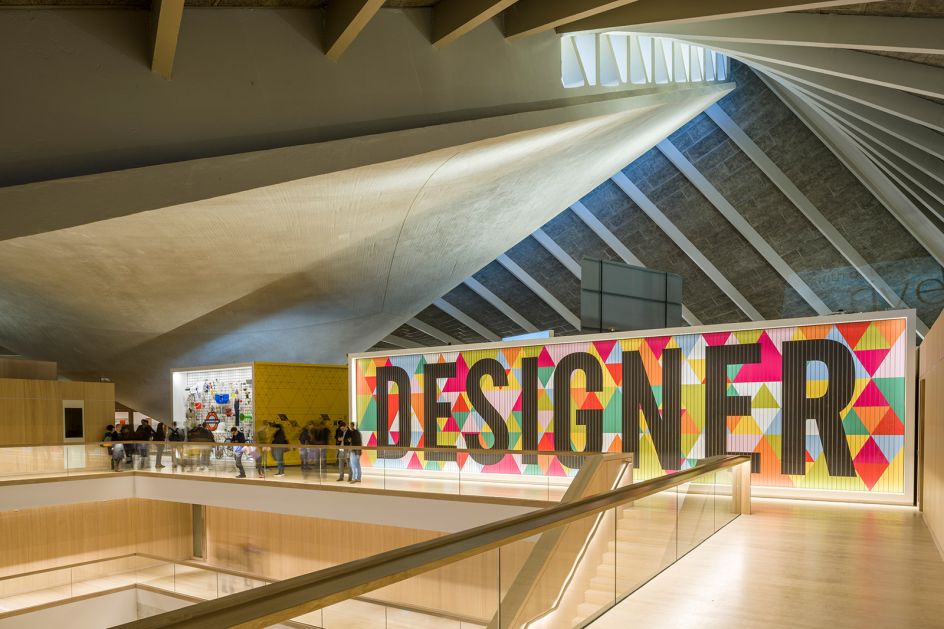
Design Museum. Image credit: Gareth Gardner
Has there been anyone who has influenced you? What did they say? Or do?
Geoff Fowle, my tutor on my degree course at Central Saint Martins. For the first two years, I was struggling and it did not stimulate me enough. I was considering whether I should stay.
Then I entered the third year and my Head of Year, Geoff, opened my mind. He told me that everything was possible if you put your mind to it. That I shouldn't restrict myself. I totally turned a corner. I then went to the Royal College of Art. At 26, I went back one day a week and taught the third year with Geoff for seven years.
I felt like an outsider at Central Saint Martins, but Geoff believed in me and that is the thing I needed to open up my potential that had been stifled.
Collaboration has played a big part in your career. What has been a recent highlight project?
The Belonging Bandstand. I have wanted to make this project for so many years. I am obsessed with the structure of bandstand. I love how they are situated in public spaces and are about public performances out in the open for everybody to see and for free.
I went to see Ditching Museum of Art and Craft and they asked me what I really wanted to do next and I said the Belonging Bandstand and I wanted to work with the local community to find out what "belonging" meant to them and incorporate it into the structure.
They said they were going to do a Corita Kent exhibition, which was music to my ears, as I love her work and her approach. So we thought, why don’t we combine the two? We then had to apply for funding, which at the 11th hour we received and then I had to get in production pretty quick.
Is there a certain thing you've not yet worked on? Any dream project that you haven't yet fulfilled?
I have a project that I have been planning for years now and it may come to fruition next year. I can’t say at the moment what it is. But it will be a structure: colours and flowers.
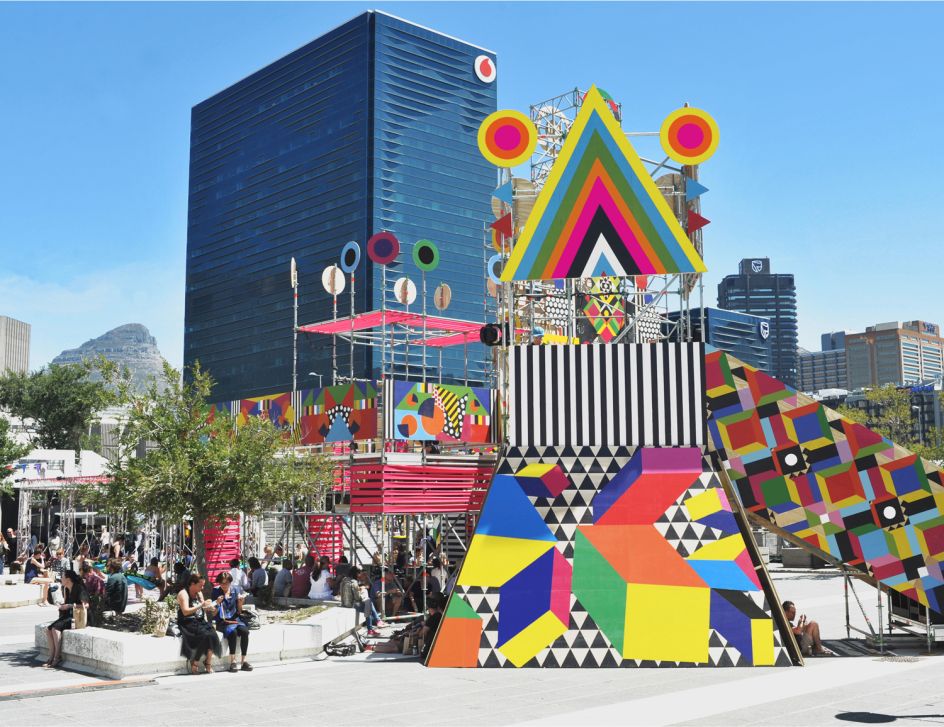
Embrace the Unknown — the title of an installation with Luke Morgan for Design Indaba
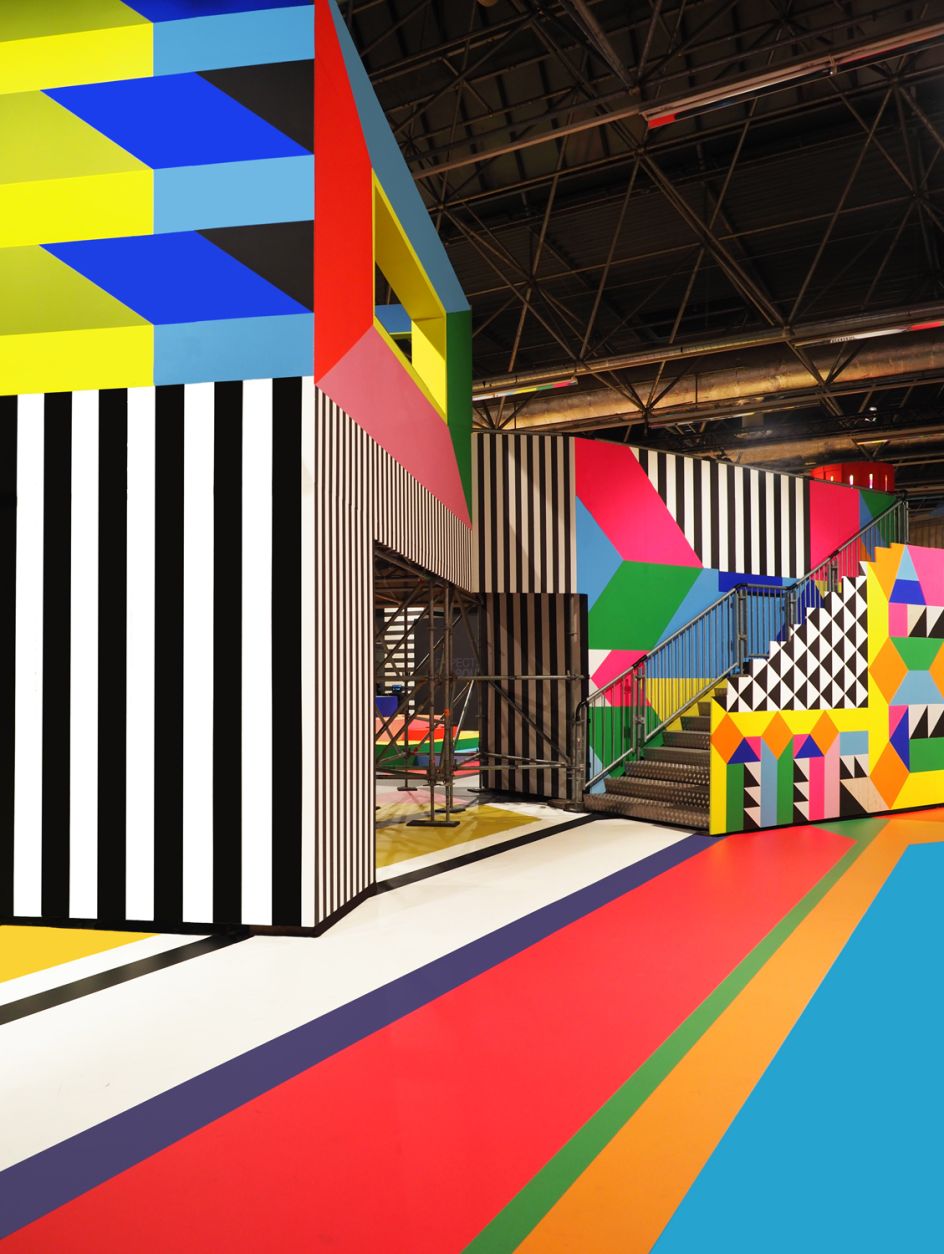
Super Labyrinth, Cologne a project with Luke Morgan
Your work is very much "you" – it's a very defined style and you're very much hands-on. Is this personal approach deliberate?
I don’t like calling what I do a style. I have an approach to my work that I have developed over many years in response to doing things I have not enjoyed and want to get more fulfilment from what I do.
I have totally orchestrated the way I work. I want to make the final work where I can, this is not always possible. But I work on every aspect of the project. I will artwork every piece of pattern and text. With the large structures, I often collaborate with Luke Morgan on the structures, furniture and the interactions. I work with structural engineers, building contractors, scaffolders, tilers, clients or project managers, depending on the requirements for the project.
When I am painting a large-scale project I will call on a team of painters who I have shown my way of painting and they are paid and come and help me in the studio. I am very particular and disciplined with the painting as it is often very complex, like a massive jigsaw.
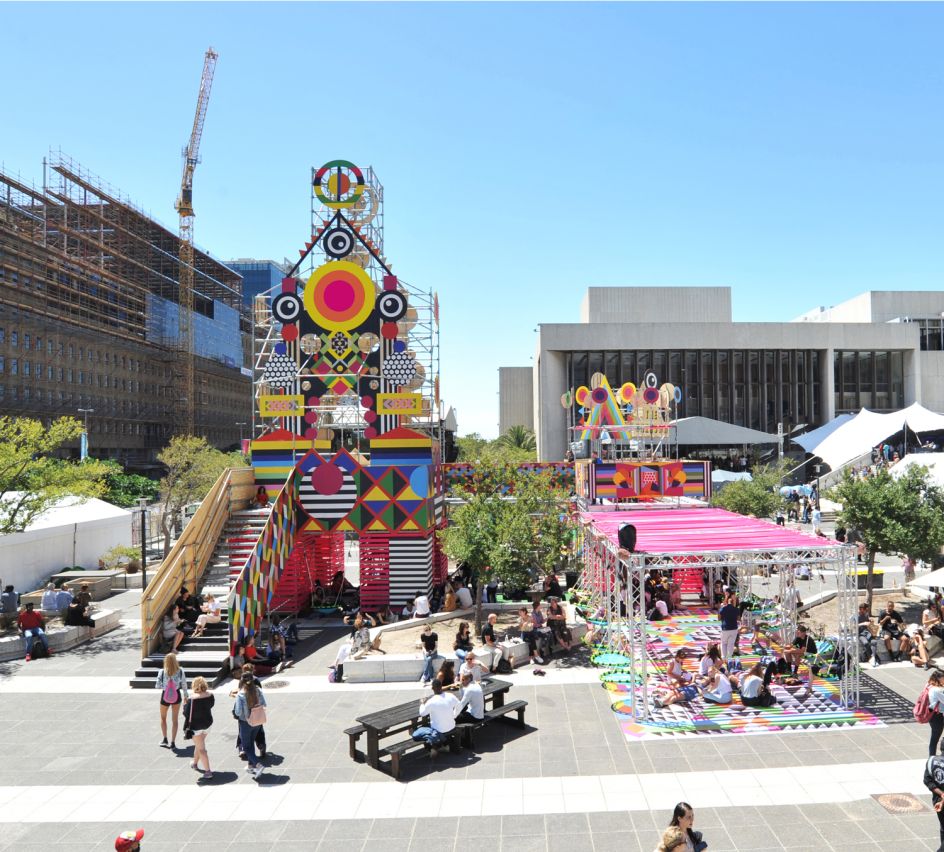
Embrace the Unknown — the title of an installation with Luke Morgan for Design Indaba
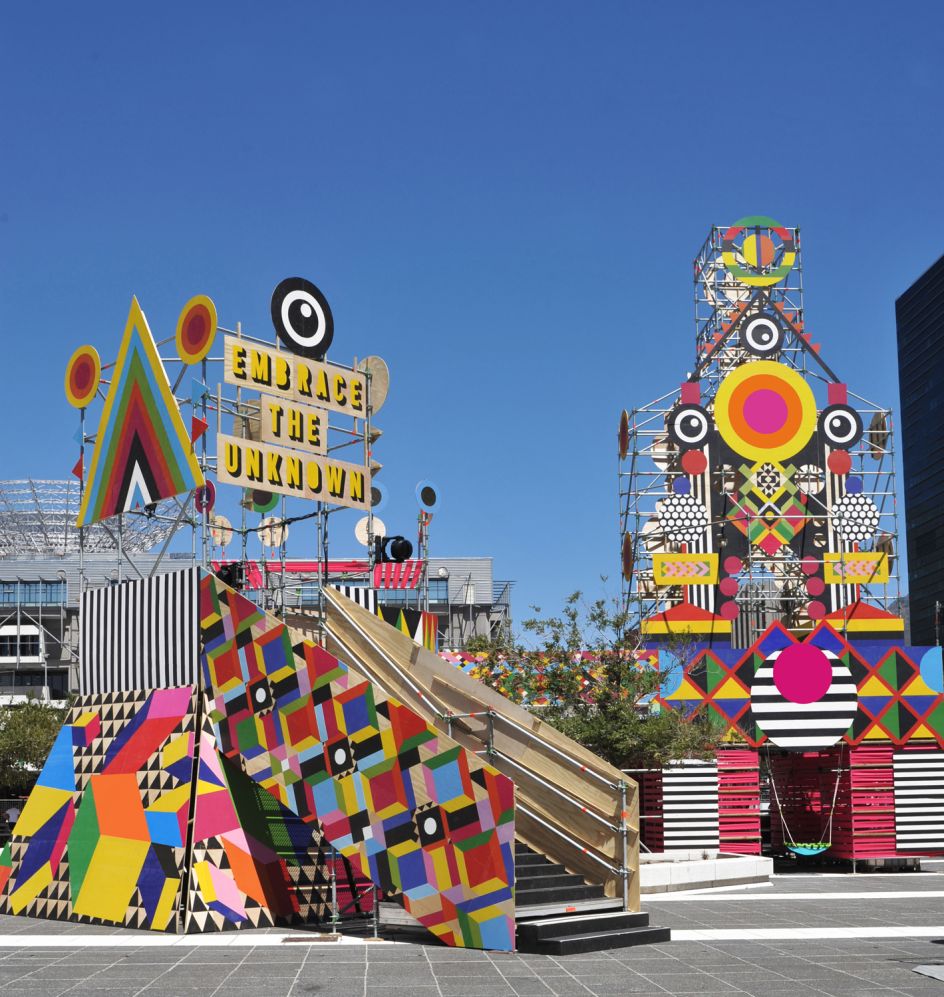
Embrace the Unknown — the title of an installation with Luke Morgan for Design Indaba
Do you feel you've ever had to adapt over the years?
I have only been making my large structures since the Movement Cafe in 2012 and I won’t adapt my approach. If people have approached me to do a project there is no use them asking me to do something different. If that were the case I would walk away and tell them they would be better finding someone else. Or we are all wasting our time, life is too short.
Moving on, you founded your own company, Studio Myerscough, in 1993. What's changed the most since then?
When I was at the Royal College of Art (I graduated in 1988), I was designing opera sets and everybody was designing posters and it took me a long time to make the work I really wanted to do. The landscape has changed.
I made my first outdoor piece in 1993 – a huge hoarding for Britishland in the City of London and there was an article about it in the newspapers about how it was too colourful and needed to come down. I am pleased that in the last 25 years attitudes have changed and we are able to do much more on the streets.
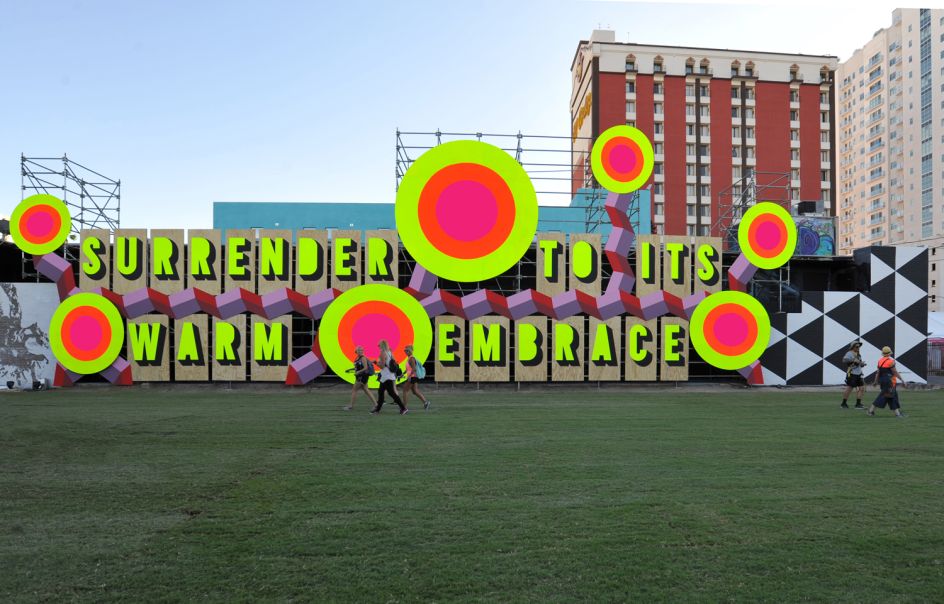
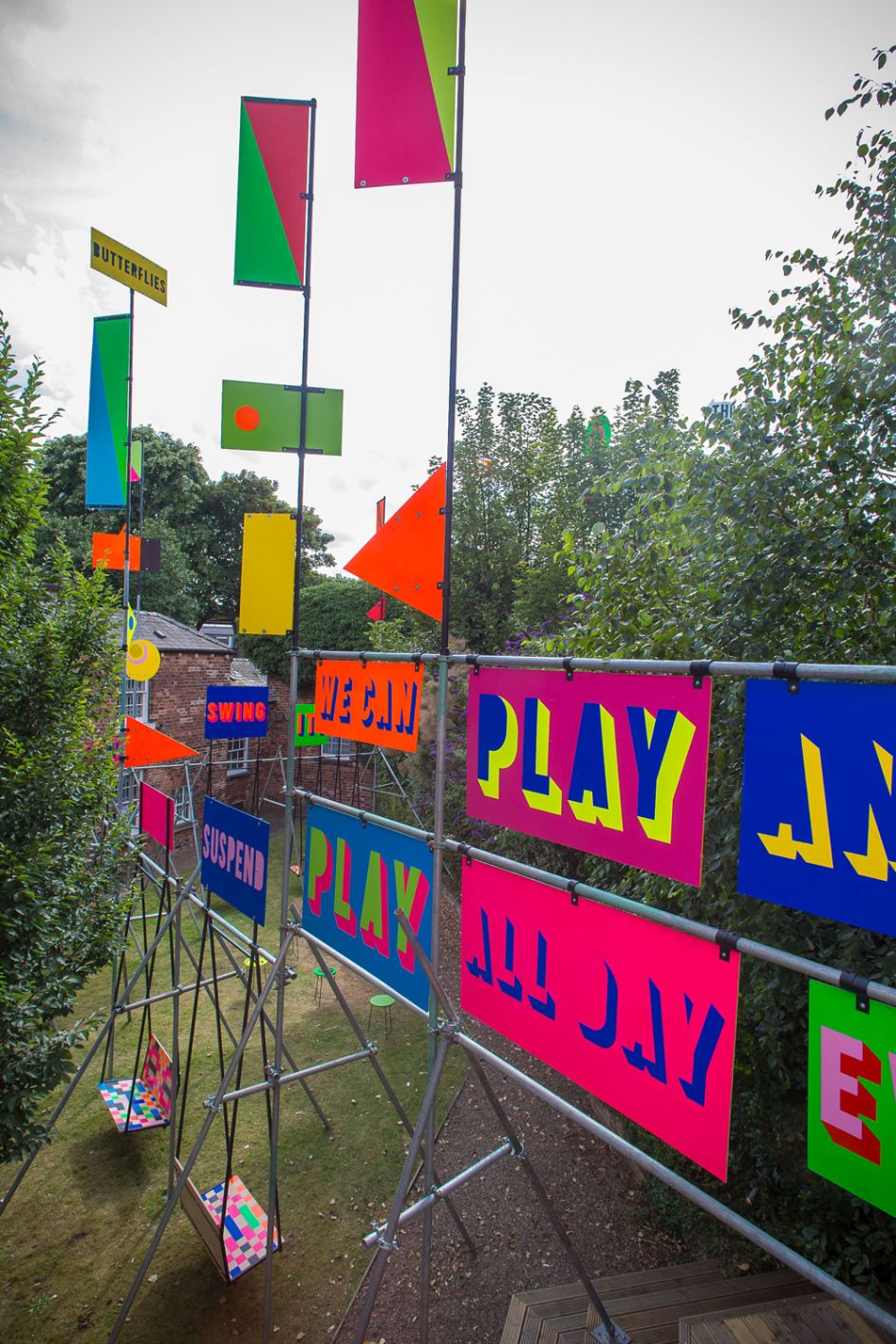
Any regrets?
The one thing I've done wrong was to call myself Studio Myerscough instead of Morag Myerscough. I was nervous back then about appearing like a one-person band (it was not about being a woman) and I wanted to be taken seriously and do large projects and appear to have more people on my team.
So Studio Myerscough immediately sounded like there were more of me. At its peak, I grew to a team of eight people but I realised this was not what I wanted to do. I was bored. So I changed my way of working and had a gallery and shop called Her House that used my kitchen. I met Luke in 2002 and we made products and everything has developed from there.
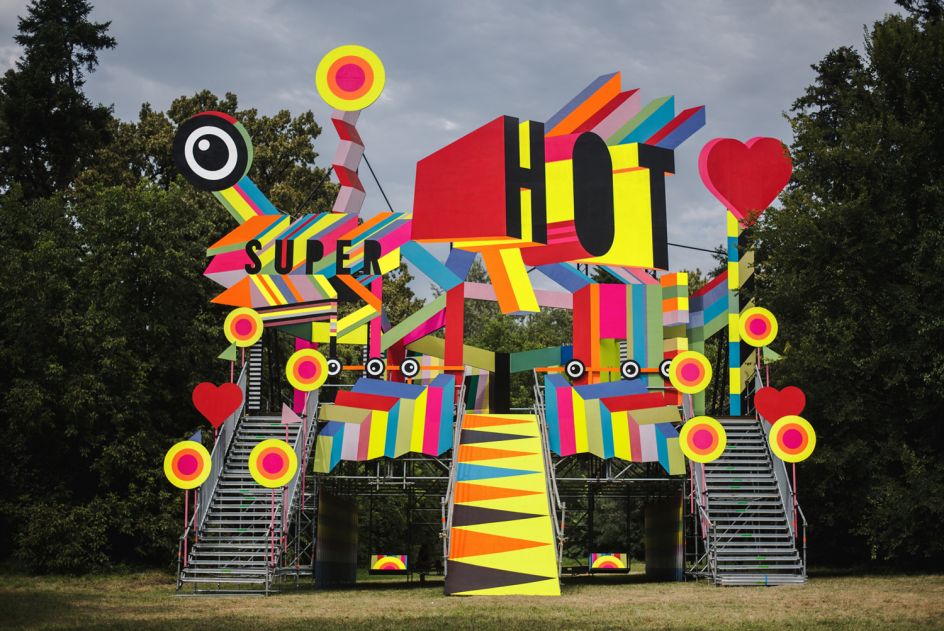
Summer Well Festival installation with Luke Morgan
So you've since stayed small as a studio – how does it feel?
Great! I want to be flexible/agile and choose the direction of my work and life; not be bound by making sure I get enough jobs to sustain lots of staff. This might be selfish but we only have one life.
As creatives, we often want recognition – is that important to you? Do you feel you've made it?
I don't know what "made it" means but I'm glad I managed to make ‘The Temple of Agape’. That piece of work expressed lots of thoughts that were inside me and I am so glad I had the opportunity to get it into the world. So personally, I am very happy I am making the work that I have spent my whole life building up to.
Do you ever suffer from anxiety?
I suffer from extreme anxiety mainly to do with doing talks. I nearly always say yes then spend the following weeks stressing about it. I don’t enjoy it before or after but I think it is good for me to do.
You say talks are good for you, albeit a cause of anxiety. How do they help?
I have been doing large talks since 2011, my first one for Typo London. I always hope it will improve and I won’t suffer from such extreme anxiety before I go on, but it has not.
I've decided to accept the way I am and how I feel, I only like talking about what I know and to be able to talk freely and not to a script. I was approached to do a TEDx Talk and I thought, why not! But when I got into the detail, I felt it was too formulaic for me, too polished.
Sometimes a bit of vulnerability is not a bad thing. I make myself do talks because I hope that if I can inspire just one person in the audience to think about what is possible, that's a good thing. And for me, it is good to express my thoughts out loud, so I can reassess what I'm doing and what I should do next.
What have you found that helps to get you out of any negative mindsets?
Doing things rather than thinking about doing things. Putting the pen on paper, then something starts happening. But sometimes that is the hardest thing to do.
Thinking of our audience, what advice can you share? For following your passions? Going your own way?
It is important to continually reassess and to enjoy your work. If you really hate it, don’t do it – do something else. I spend a lot of time observing everything around me and how I can make work that responds to our world. If you want or feel you need to be part of a tribe, that is great. But if not, don’t worry. It just might not exist yet but does that matter? Don’t be afraid to go your own way.

















